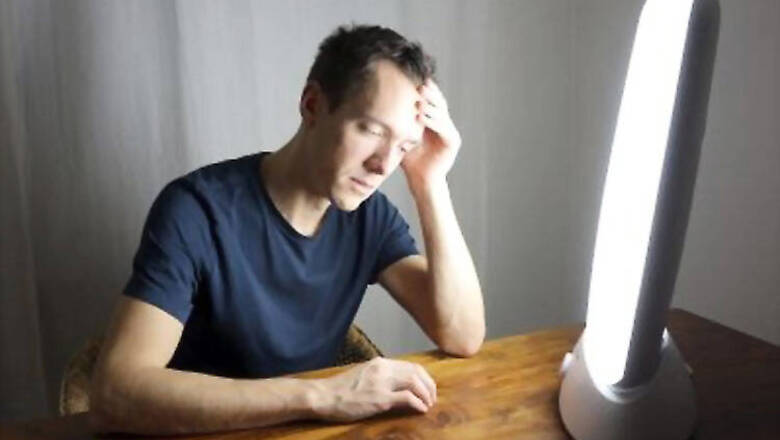
views
Not many enjoy the shorter days and longer nights that winter brings, but some find it harder than others, developing a form of depression called seasonal affective disorder, also known as SAD. However, researchers have found a new way of treating the seasonal depression with cognitive behavioral therapy.
The traditional method of treating SAD, in addition to antidepressants, is using a light box, a device that emits a 10,000 lux of full-spectrum light to mimic sunlight. Patients are instructed to sit in front of the lightbox daily, usually in the morning, to simulate the sun rising and kickstart the circadian clock.
However, researchers at the University of Vermont also wanted to try a different treatment — cognitive behavioral therapy (CBT) — which, although has been used in depression treatment before, had not been specifically used to treat SAD until now.
CBT works by trying to change negative thought processes and break negative attitudes so that the patients feel more positive and empowered.
With regards to SAD, the team wanted to change negative thoughts about winter; so instead of hibernating and avoiding the season, patients could come to embrace it and keep up their social habits and hobbies.
To research the possible benefits of CBT, the team looked at 177 adult participants with major depression that followed the seasonal pattern of SAD.
88 participants were given a 6-week course of CBT while the other 89 participants were given a 6-week course of light therapy.
All were then followed for one and two winters after the trial had ended, with depression status assessed in December or January by telephone and follow-up visits occuring in either January or February.
The results, published in the American Journal of Psychology, showed that in the first winter after treatment both groups showed large improvements in their SAD; however, there was no difference in this level of improvement between either group,
with both treatments equally effective.
However, during the second winter, results showed that only 27.3% of participants relapsed when using CBT, compared with 45.6% of patients using light therapy. Severity of symptoms was also greater reduced in those that had received CBT.
The team concluded that CBT may have been more effective in the long-term because although it takes more work and committment than light therapy, CBT teaches people to change their thoughts, which can help them overcome the condition year after year.
In addition, there was a high rate of non-compliance in the light-box users, with the study finding that less than 1/3 of those in the light therapy group using this treatment one or two winters later. As light therapy is intended for daily use starting in autumn and to be continued until spring, it may be another reason why more effective results were seen with CBT.



















Comments
0 comment